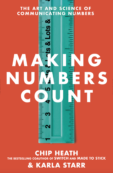In the book, we talk about how vivid details can make ideas more credible. Here’s an example from the annals of advertising, plucked from an article on the copywriter Claude Hopkins:
Back in 1919, Schlitz beer approached Claude Hopkins. Their beer sales were in 15th place. They asked Hopkins if he could help them sell more beer. He agreed to meet with Schlitz and toured the brewery. He was fascinated with what he discovered. He then returned two months later with an ad campaign.
His ads told of the âcrystal clear water from a special artesian wellâ. They told of the one âmotherâ yeast cell that produced all the yeast for fermenting the beer. It was the result of over â1,500 experiments and produced a very distinct fresh, crisp tasteâ. He told of how the bottles were âsterilized 12 times to ensure purity, so that nothing would interfere with the clean taste of the beerâ.
The Schlitz people hated it. They explained to Hopkins that this would never work. They told him, âAll beer is made the same way.â Hopkins calmly assured them that people would be fascinated with the âbehind the scenesâ look and, that no other beer maker had ever told the story.After much discussion, Schlitz relented and let the ads roll out. Six months later, Schlitz beer was the Number 1 selling beer in the nation.
From 15th place to 1st in half a year â absolutely astonishingâ¦
In actual fact, Schlitz were right. All beers are made pretty much the same way.
But, what Claude Hopkins had done was to turn the features that went into making beer, into the benefits people gained when they cracked one open and drank it – clean, crisp and, distinctive.
The work of a master.



